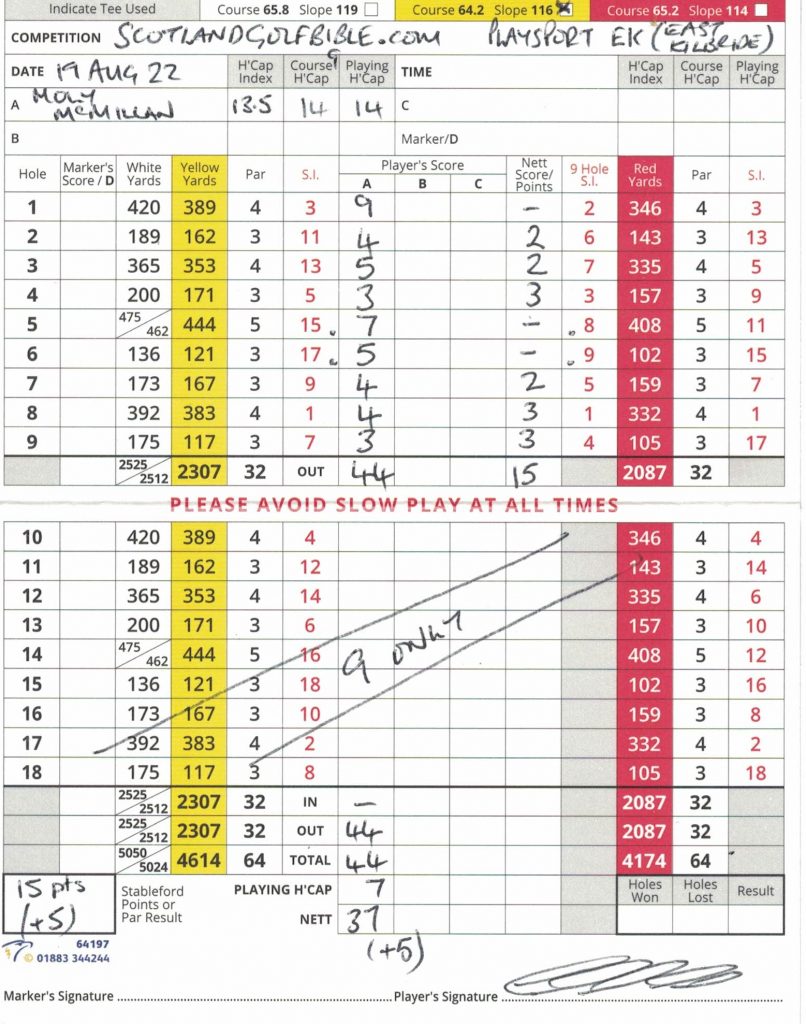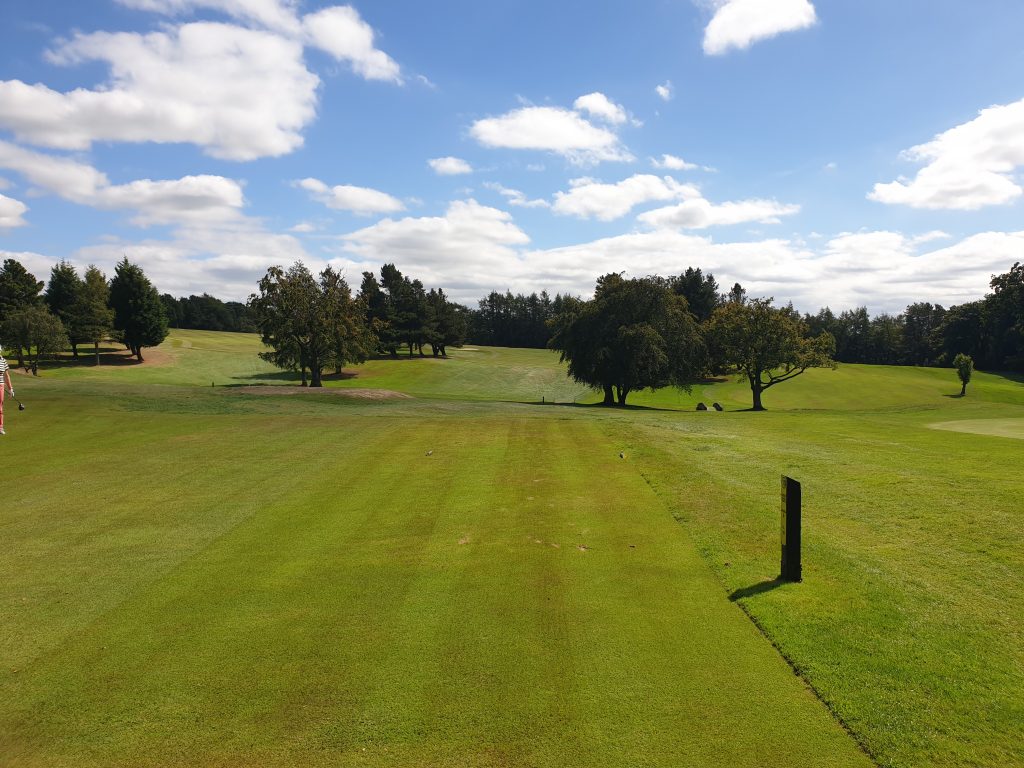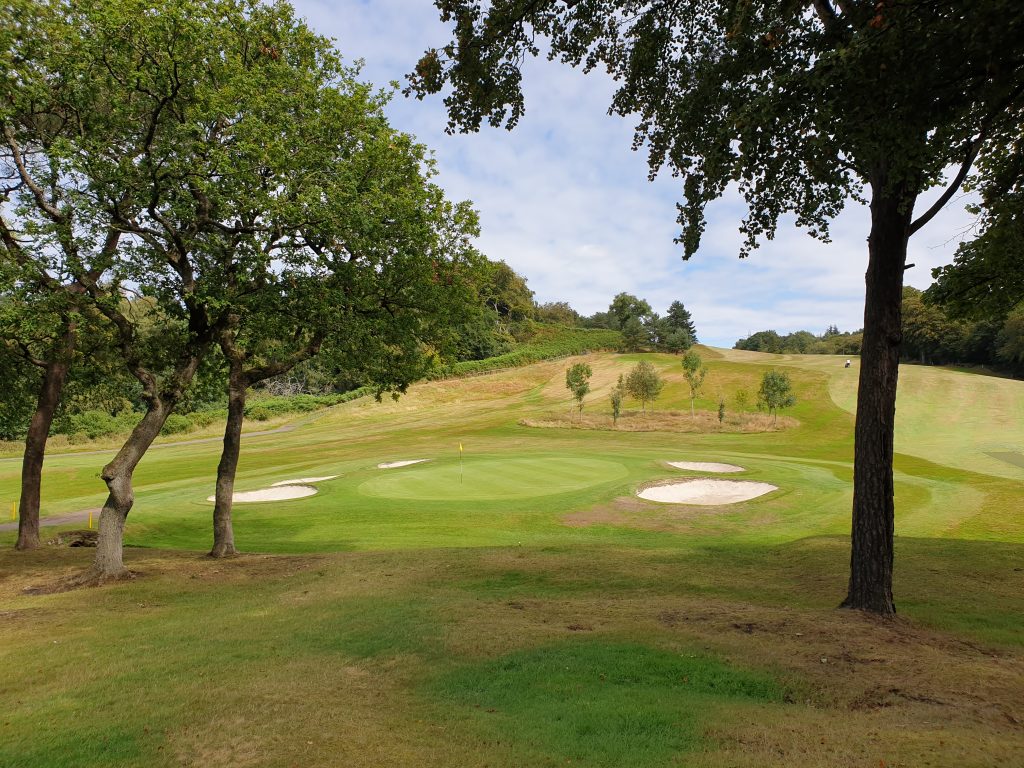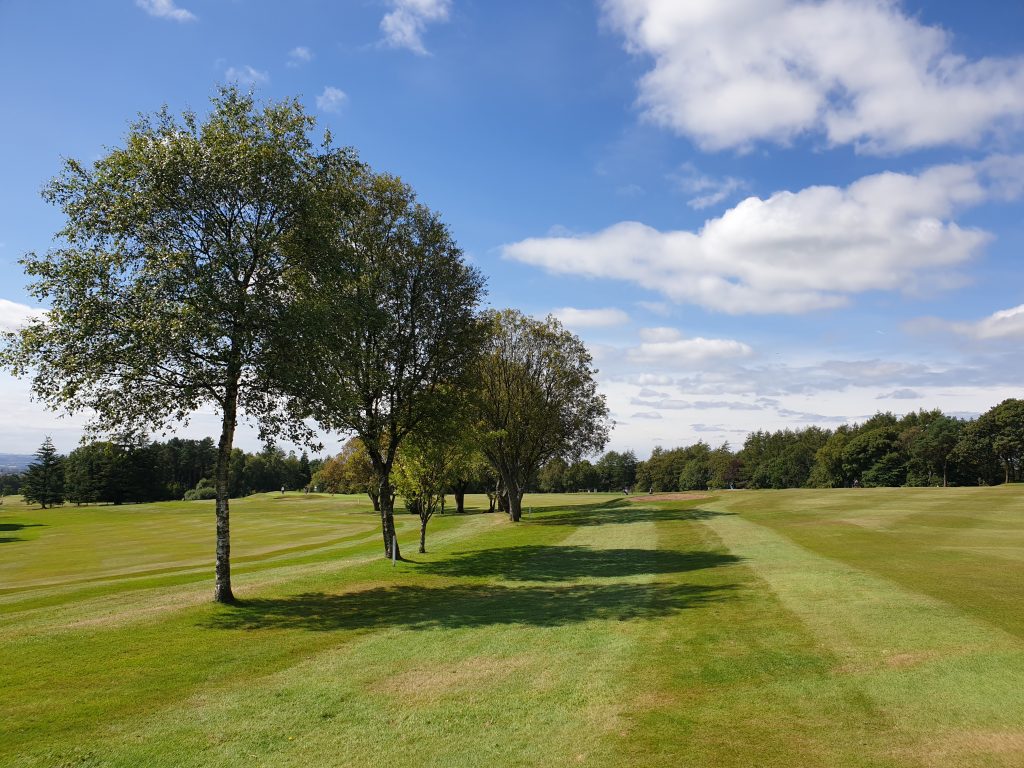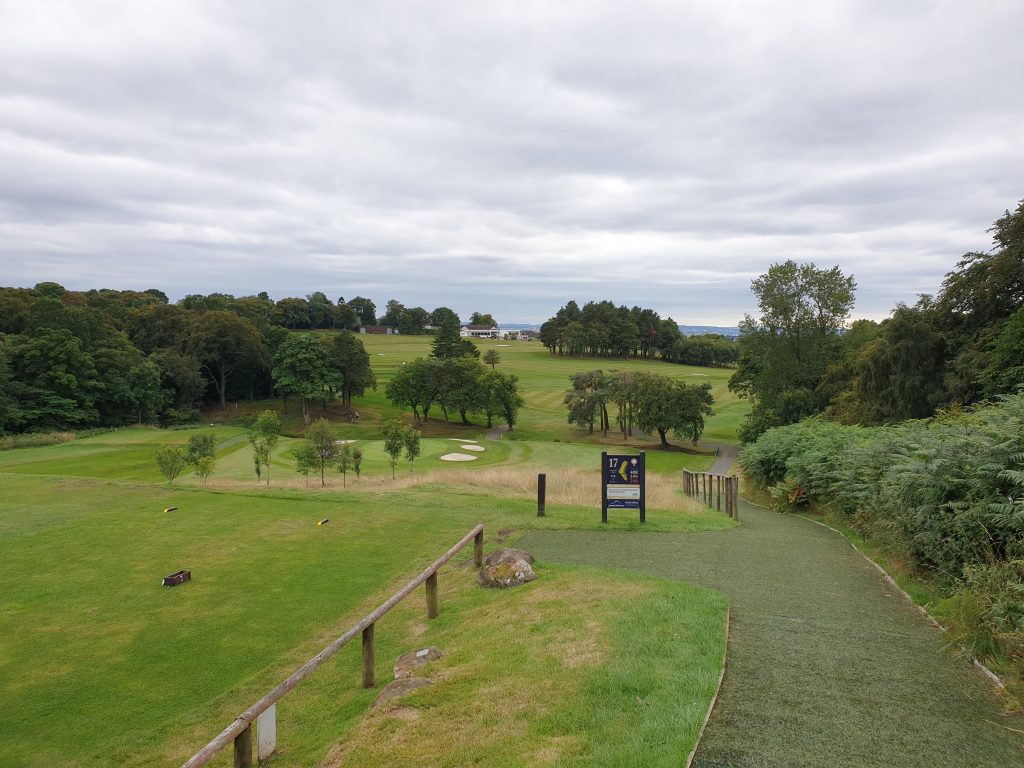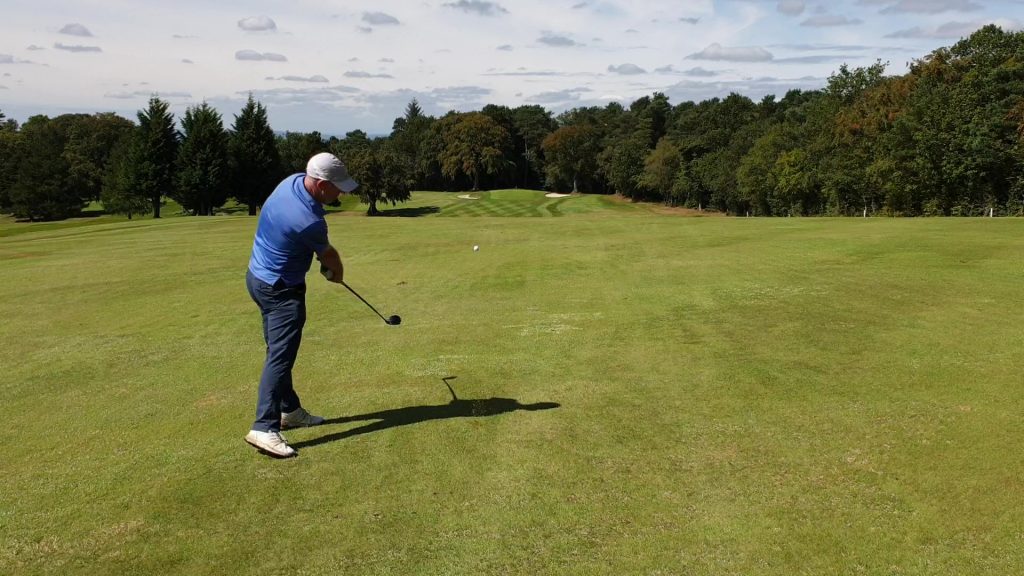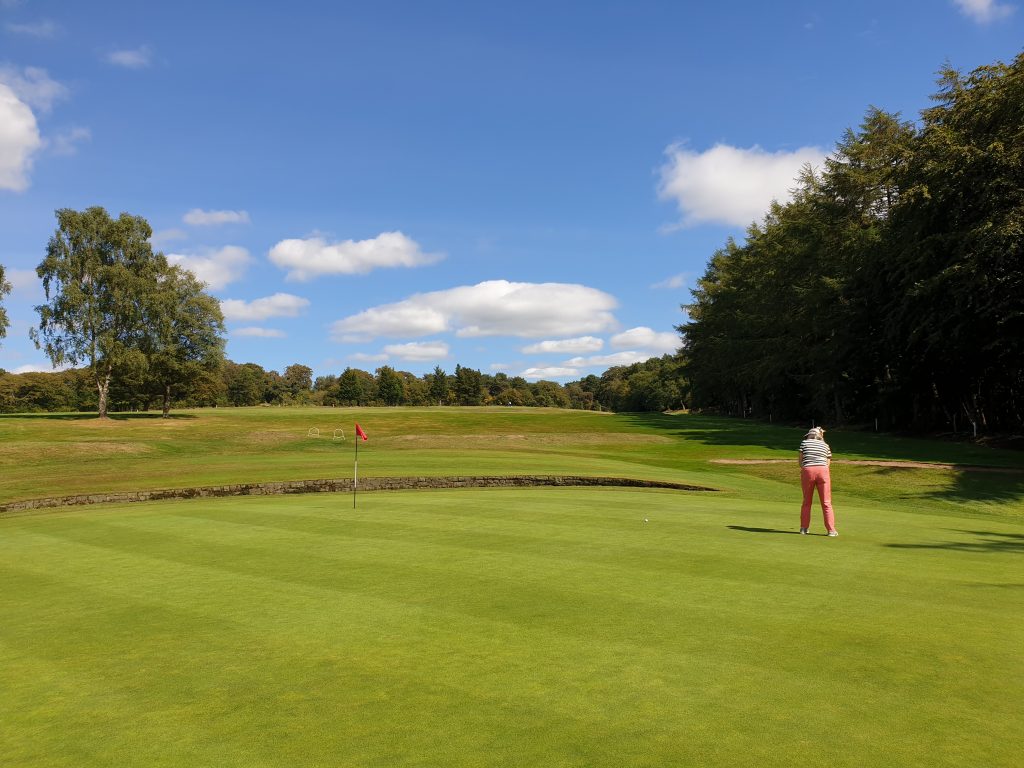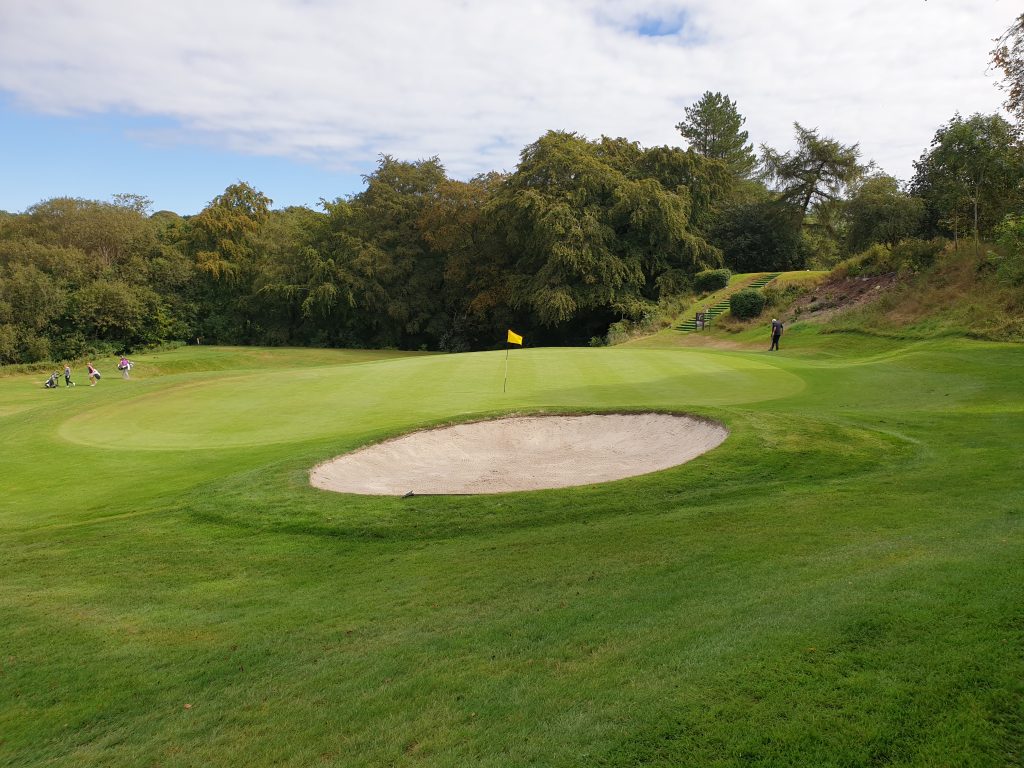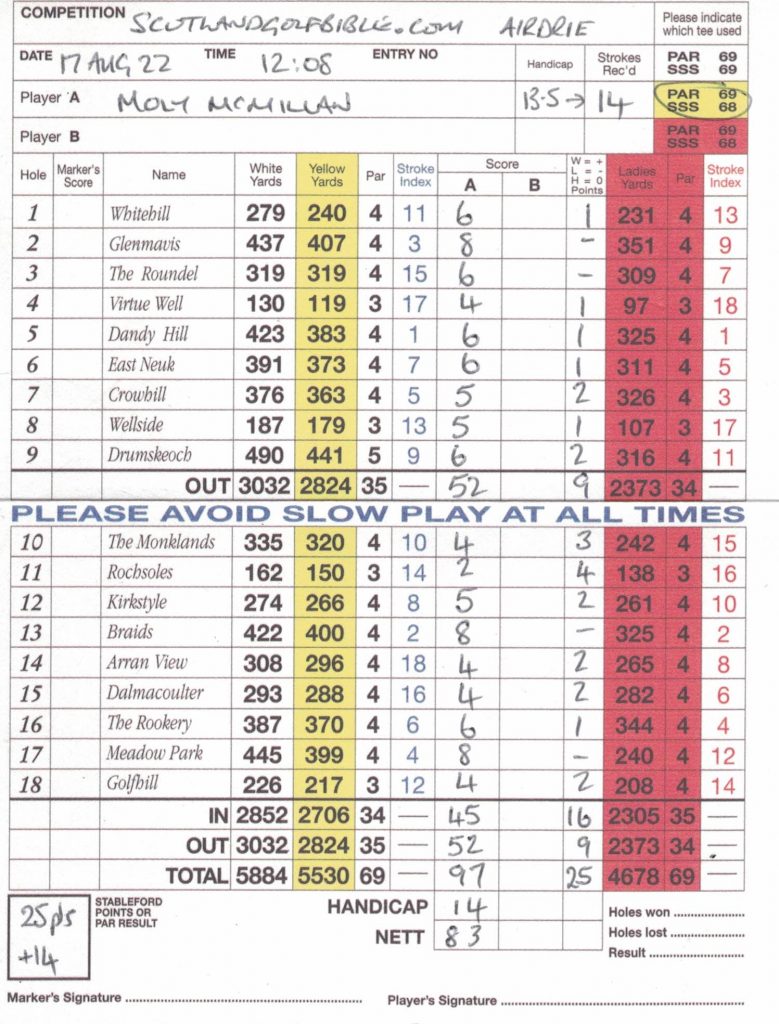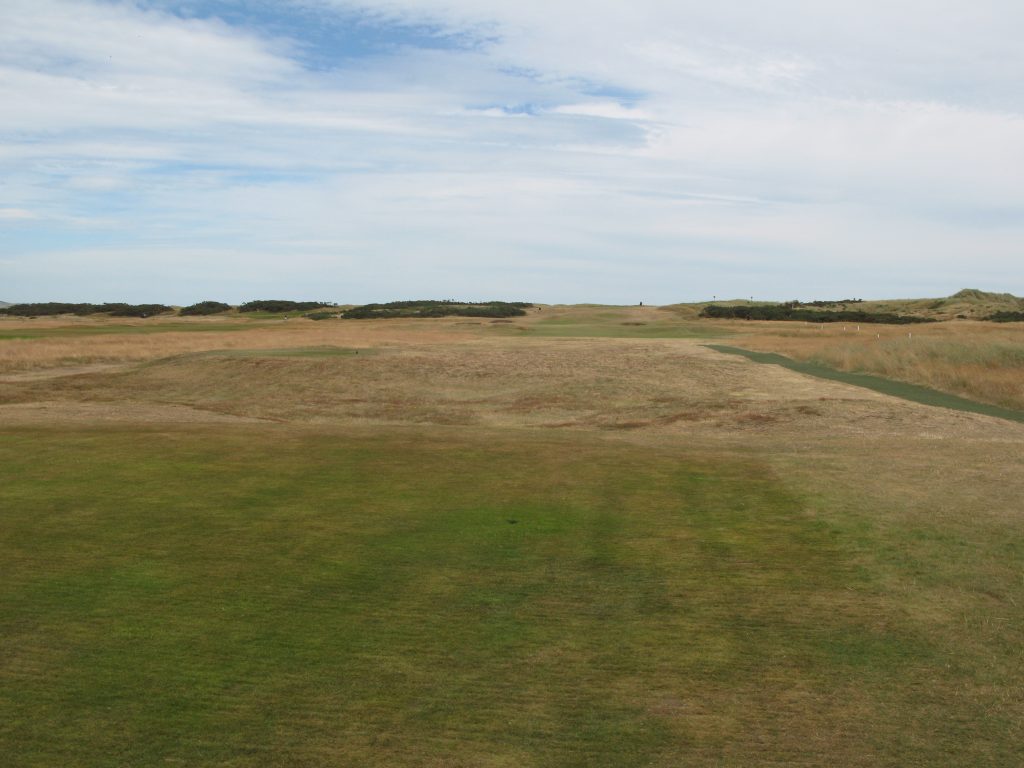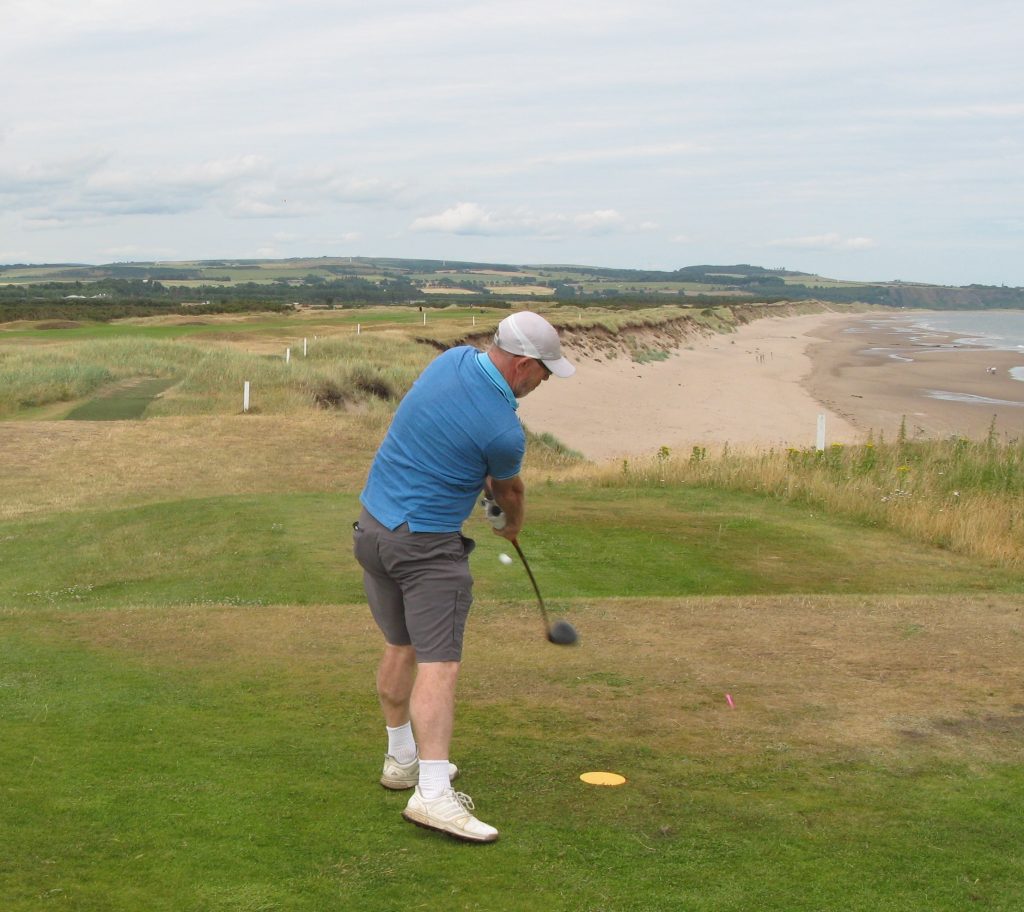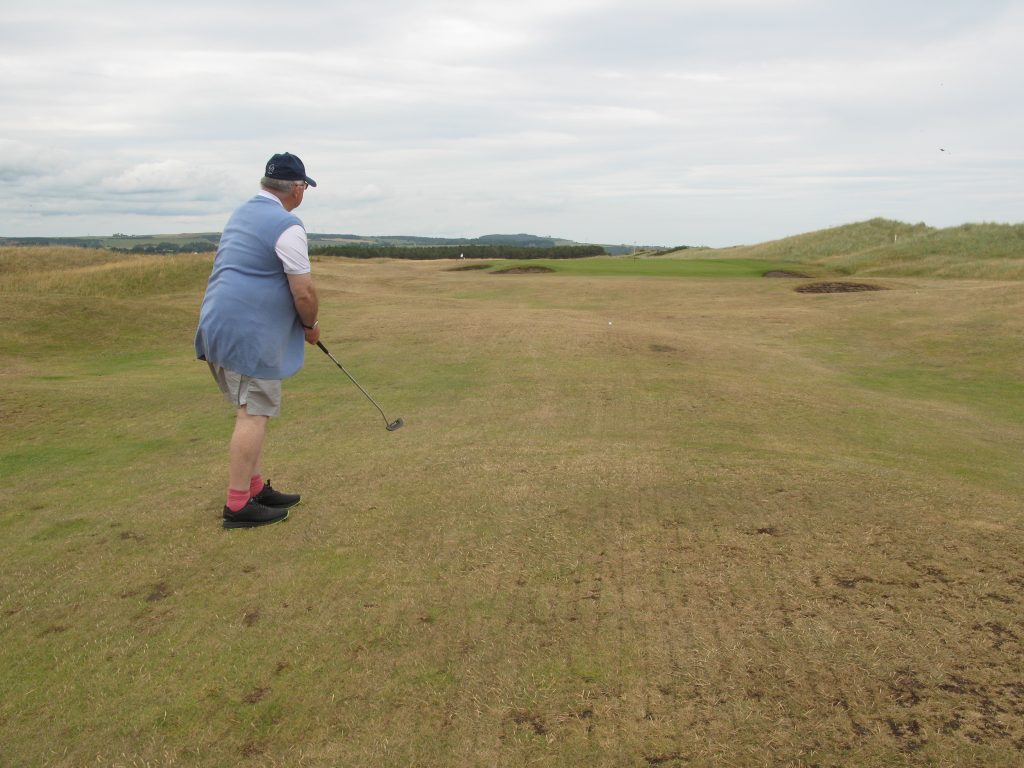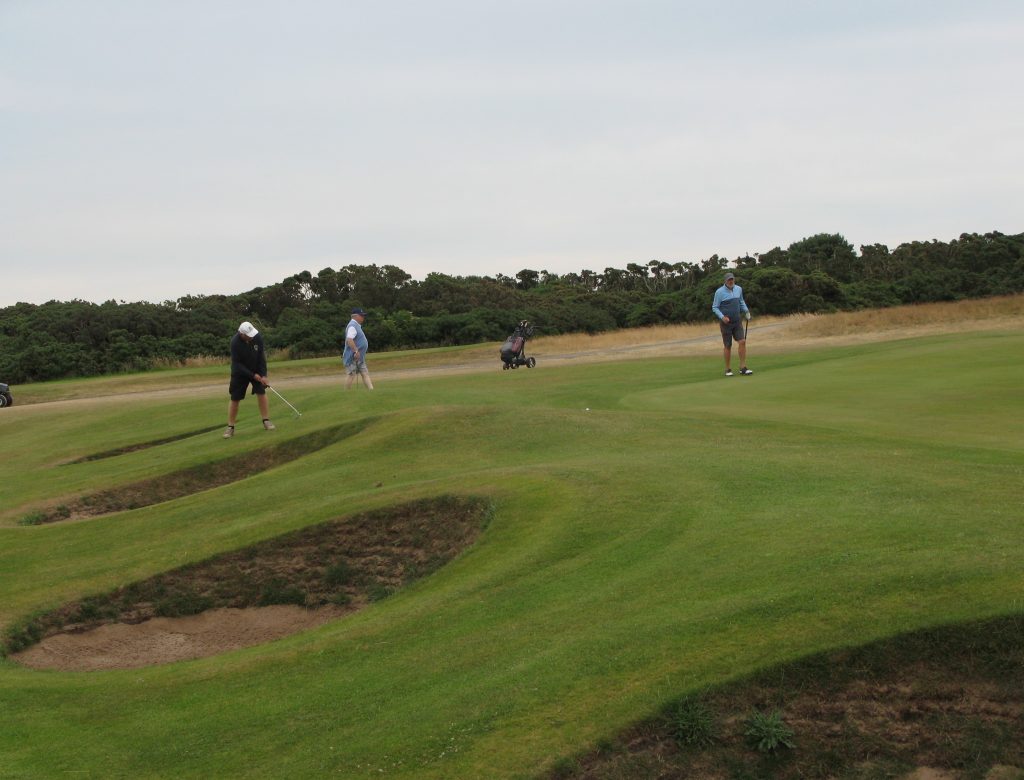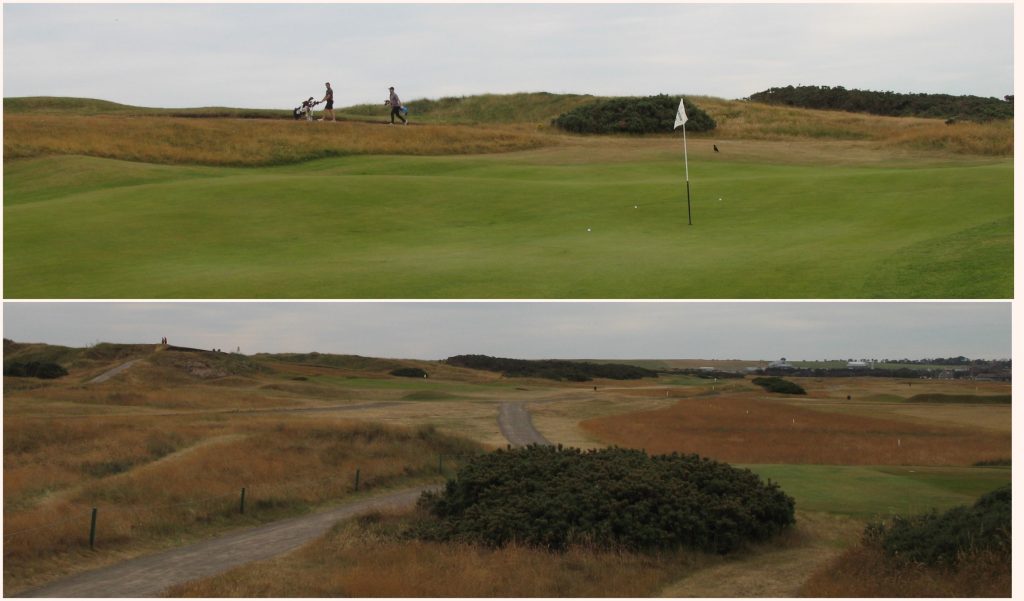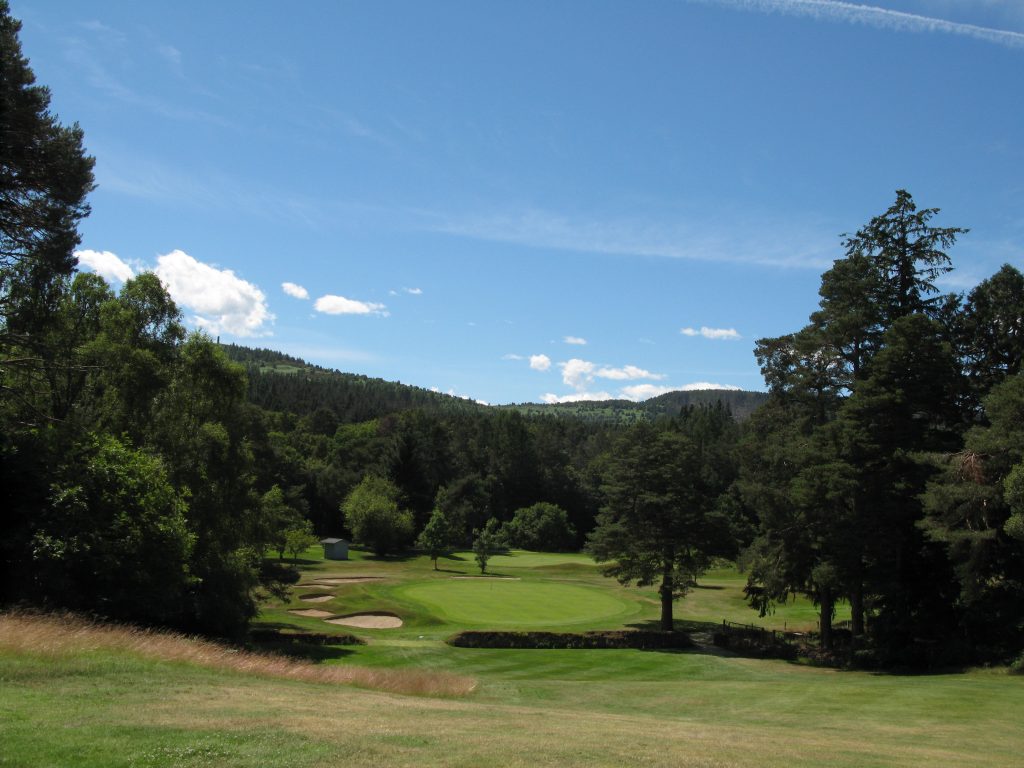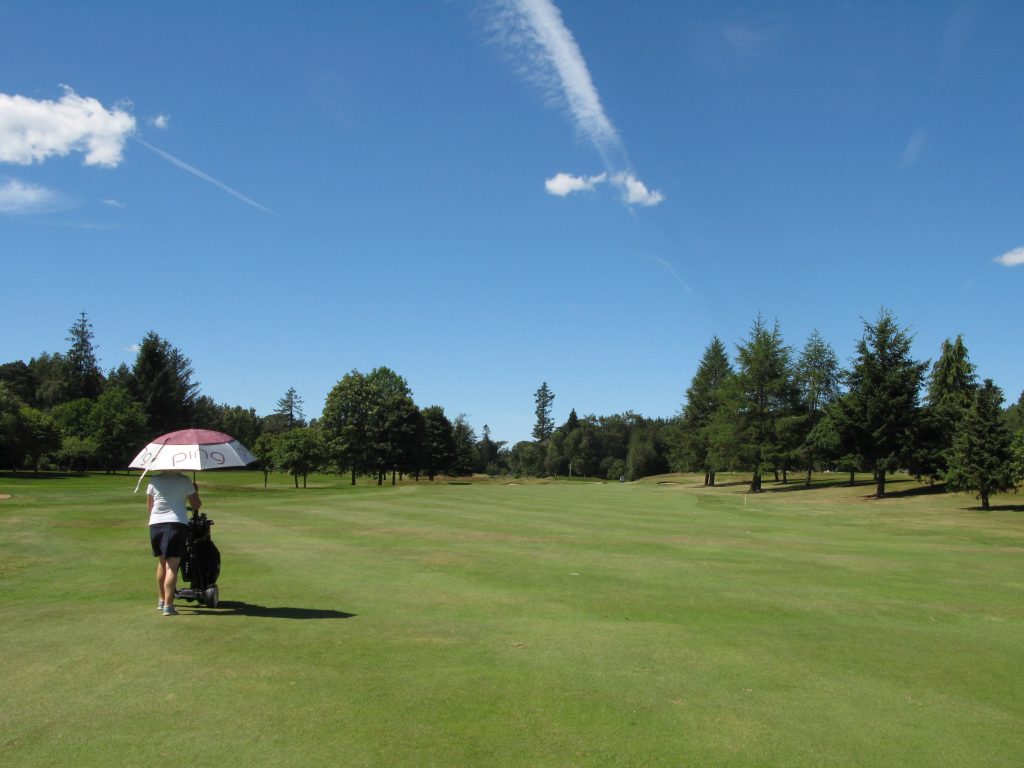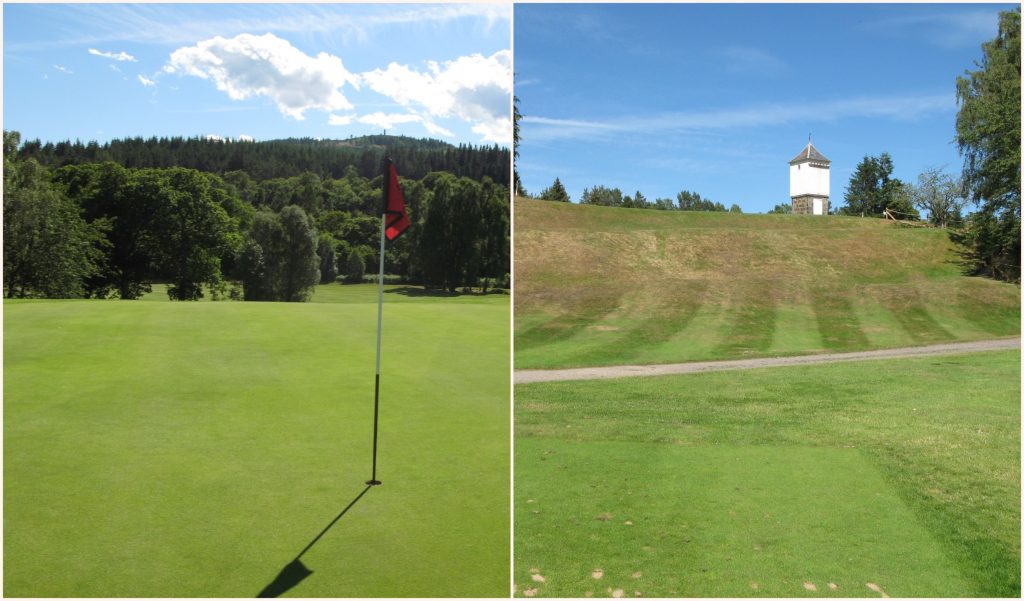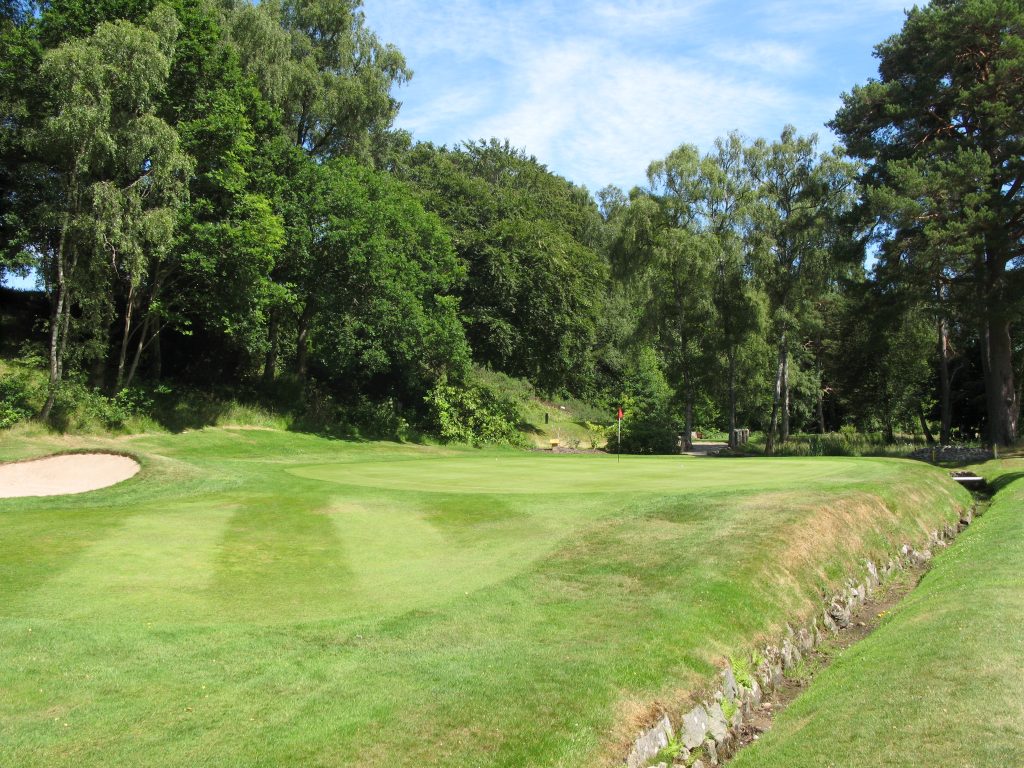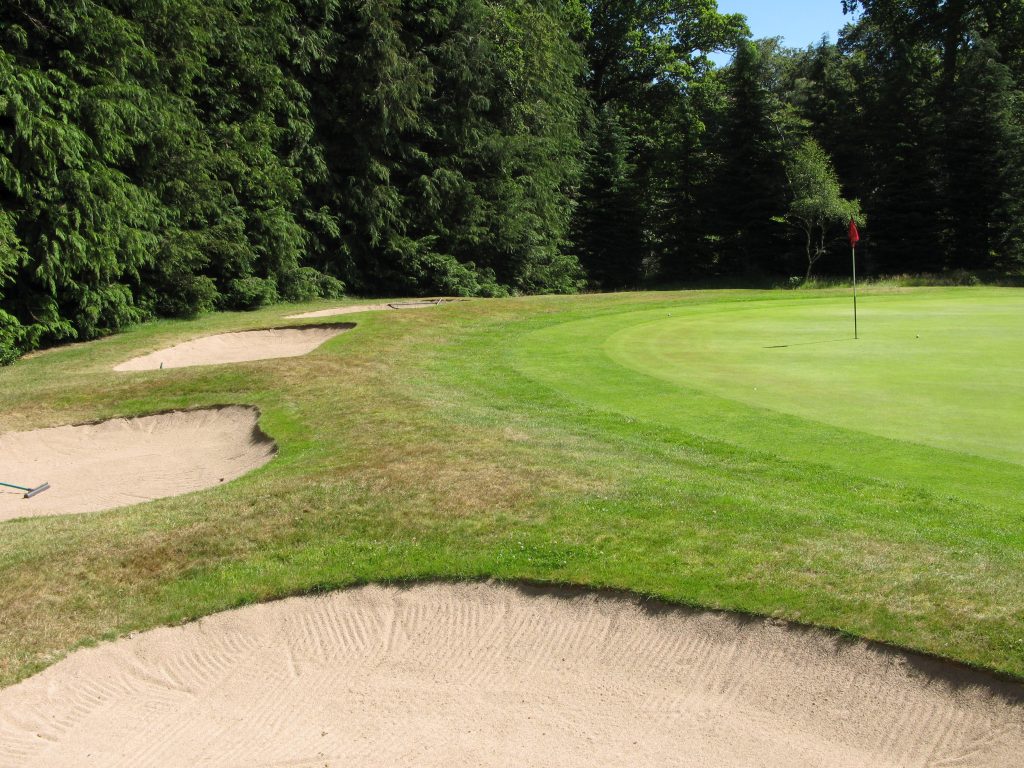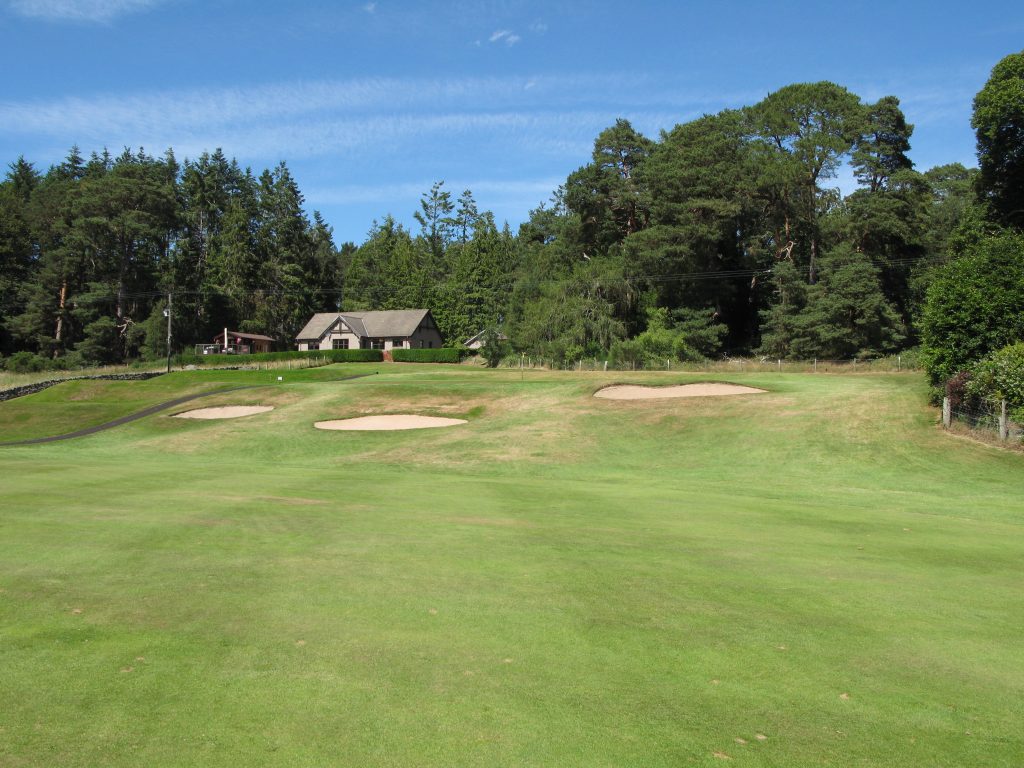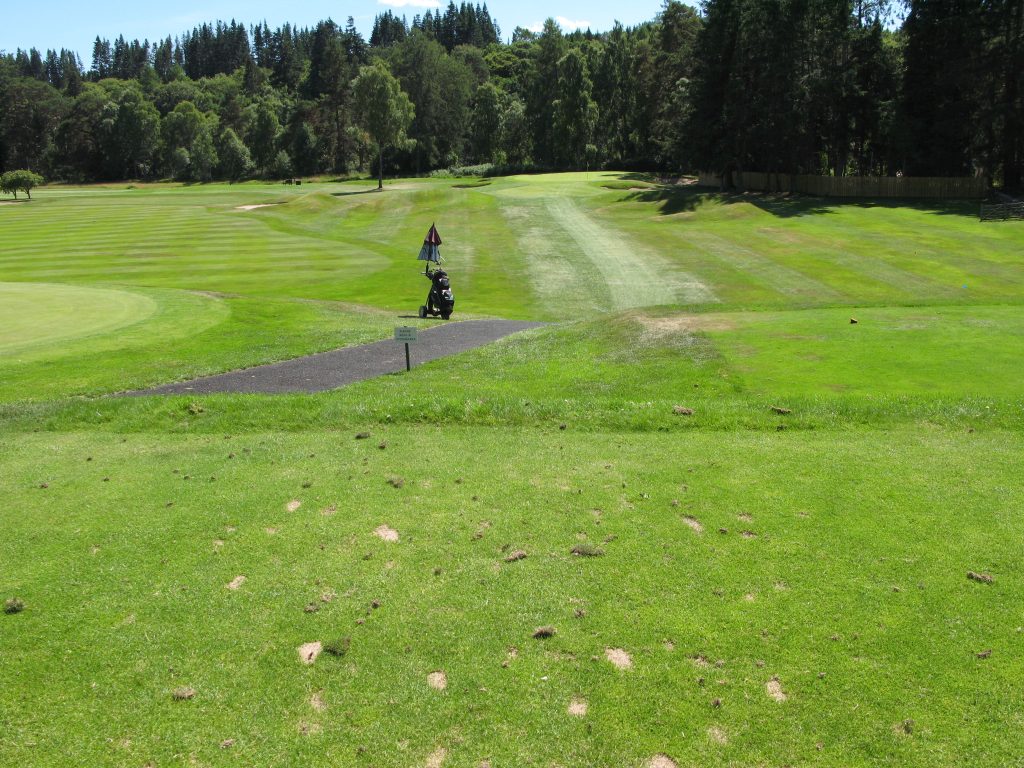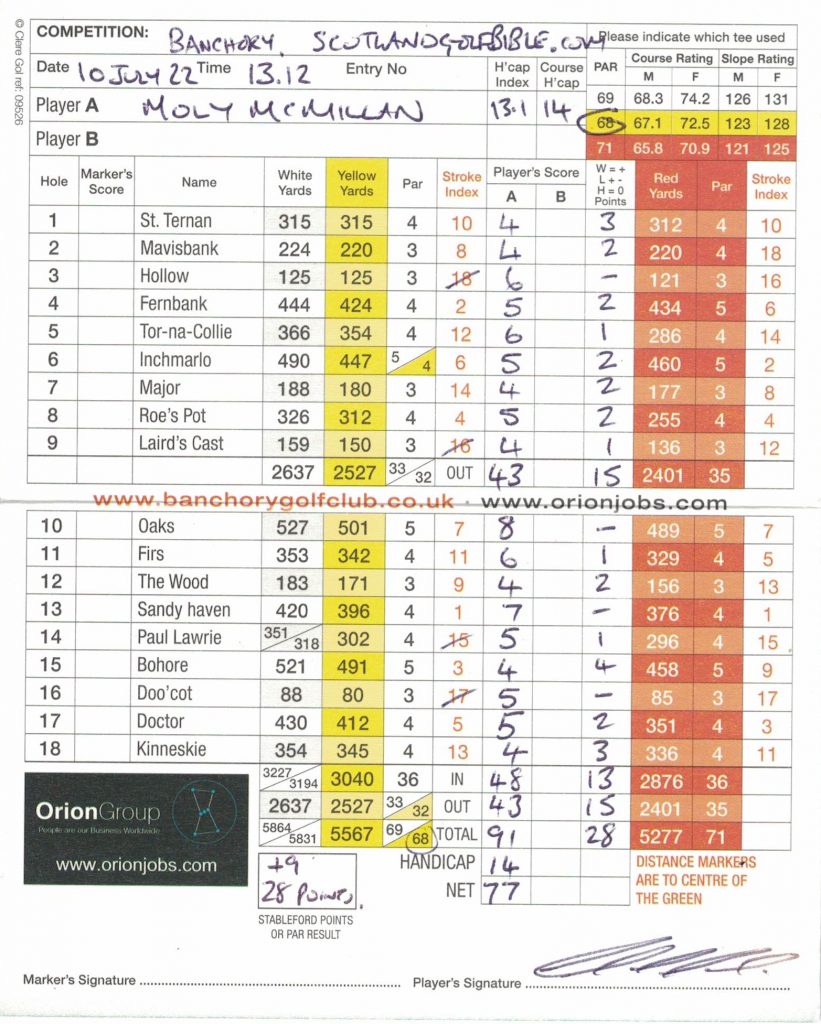Like watching a ‘tribute band’, very enjoyable but at times a bit ‘corny’.
Round £15. Par 32. Course Rating / Slope Rating (yellow) 32.1/116. Value (out of 5) – 4
Moly’s Score – 44
‘Playsport’ is a multi-sport commercial site in north East Kilbride, a town of almost 80,000 making it the 6th most populated conurbation in Scotland. ‘Playsport Golf’, the golfing brand of the business, operates a two-tier driving range, a very large golf store and a 9 hole course, called Heritage Links.
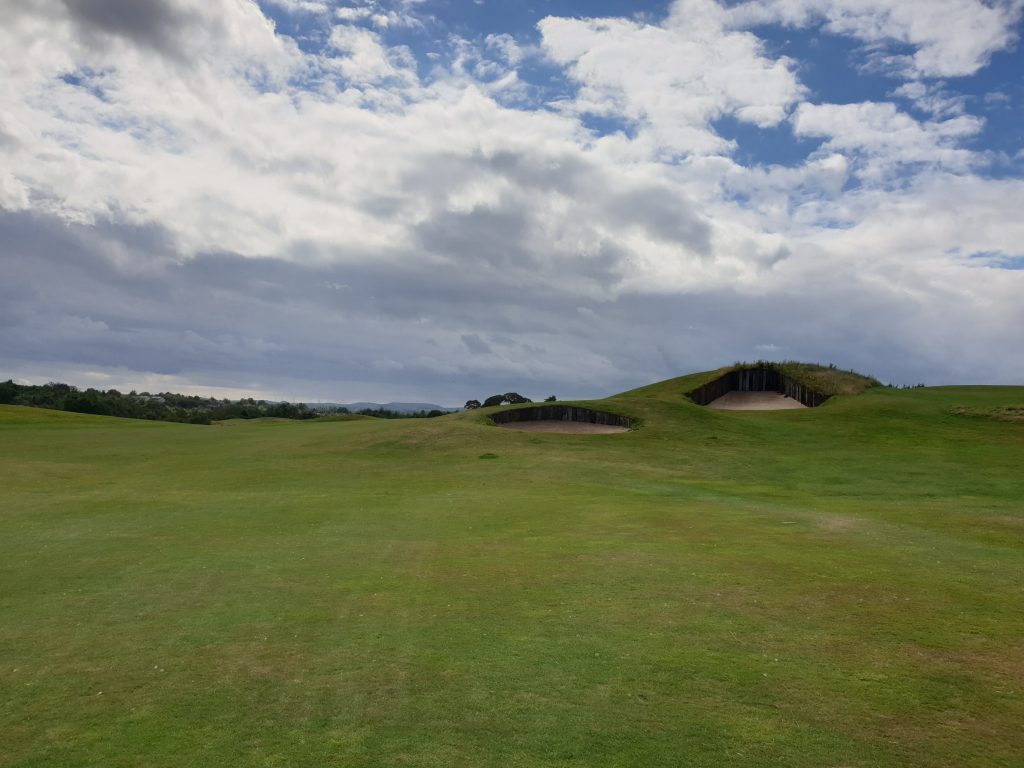
As the name suggests, Heritage Links is a homage to Open Championship venues, with each hole inspired from a specific hole of the world’s best links courses.
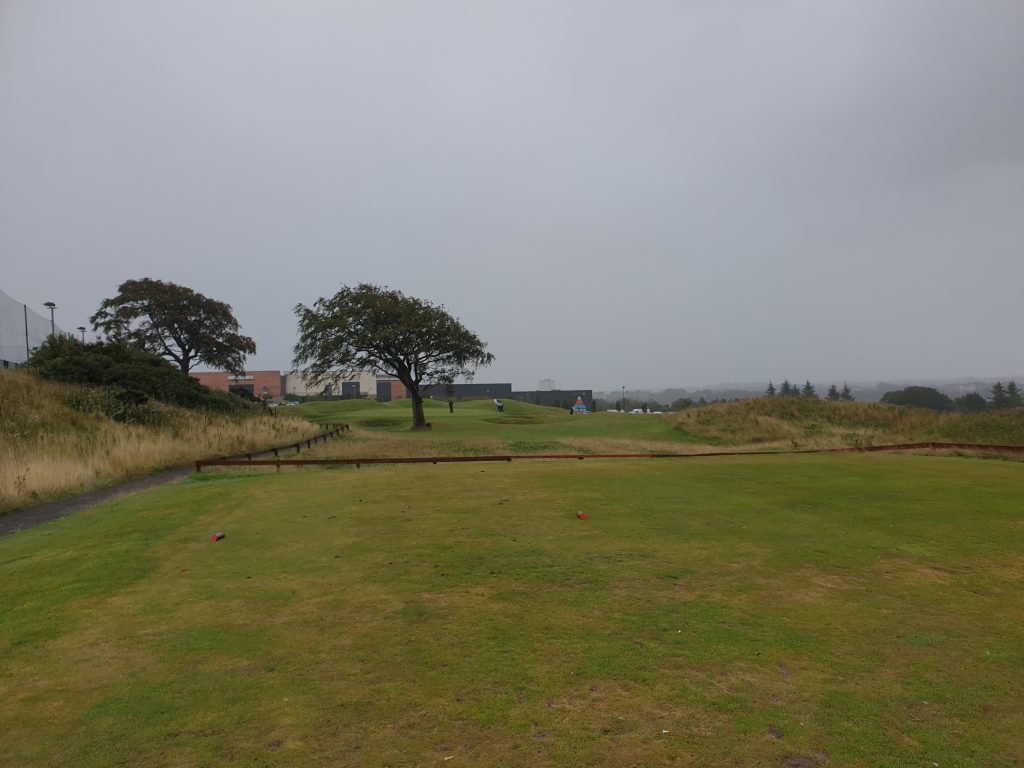
East Kilbride lies on a plateau, just south of Glasgow, and the golf course is fully exposed to the elements; on the day I played there were 40 mph winds and some heavy showers. These are ideal conditions to go alongside the course’s design aim of replicating some the challenges faced in The OPEN. In addition, the course has outstanding views.
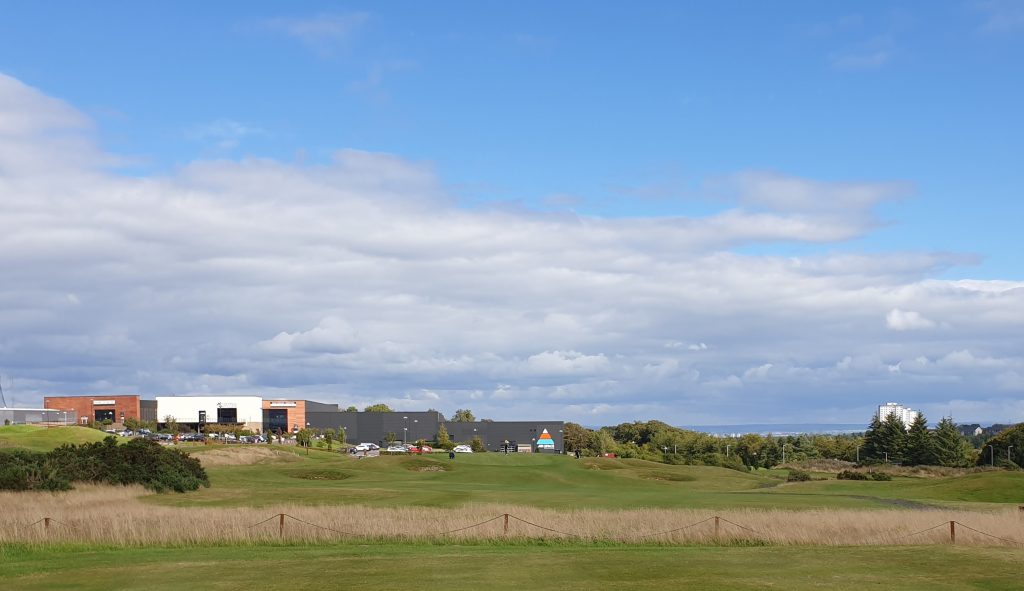
Although this could feel a little ‘corny’, the resulting course is a great test of your game, not least because it’s the bunkering from the host courses that are mainly used to create the inspirational feeling. However, this is not “replica” golf, so take it for what it is and enjoy the layout.
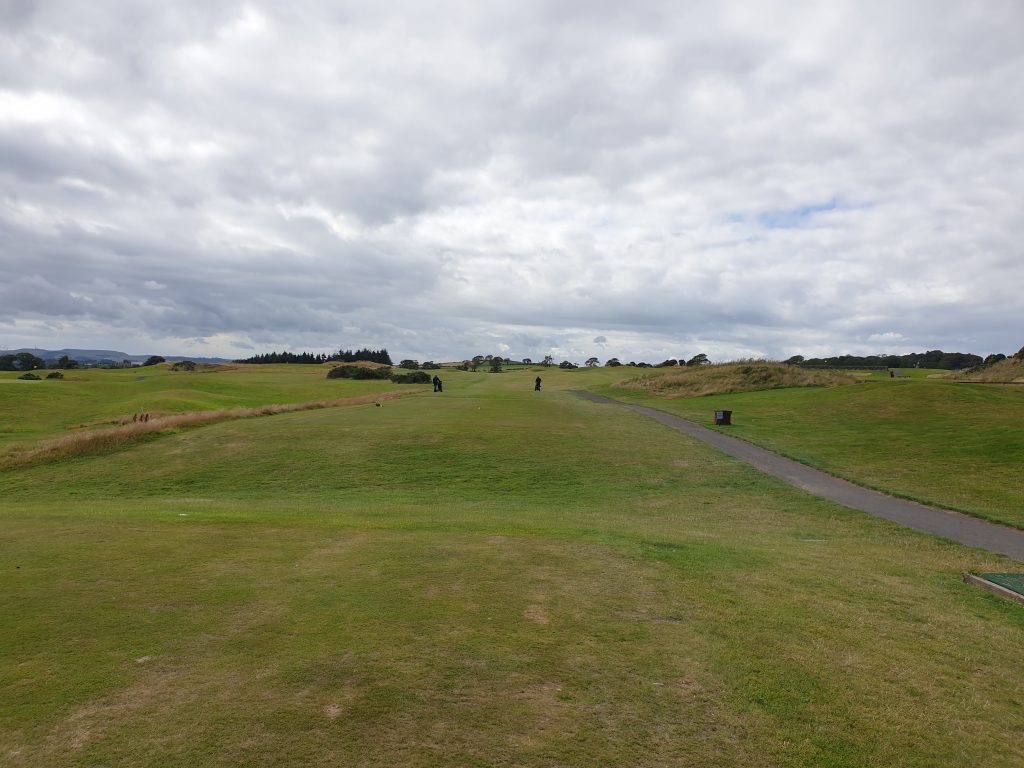
The course opened in 2009, built to high specifications, and has become a popular venue. Despite the inclement weather forecast when I played it was very busy, so ensure to book ahead. With multiple sports on the same site, there are activities for non-golfing partners and kids.
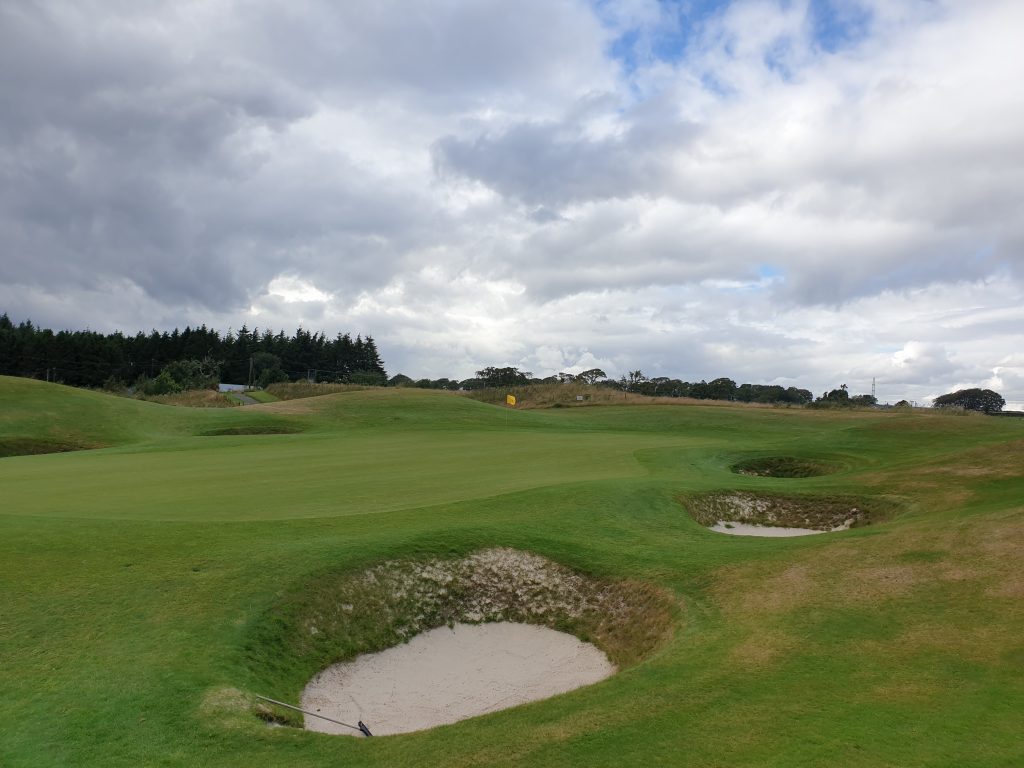
Although heavily played the course was in very good condition, with greens and bunkers excellent. At £15 for 9 holes, this is very good value.
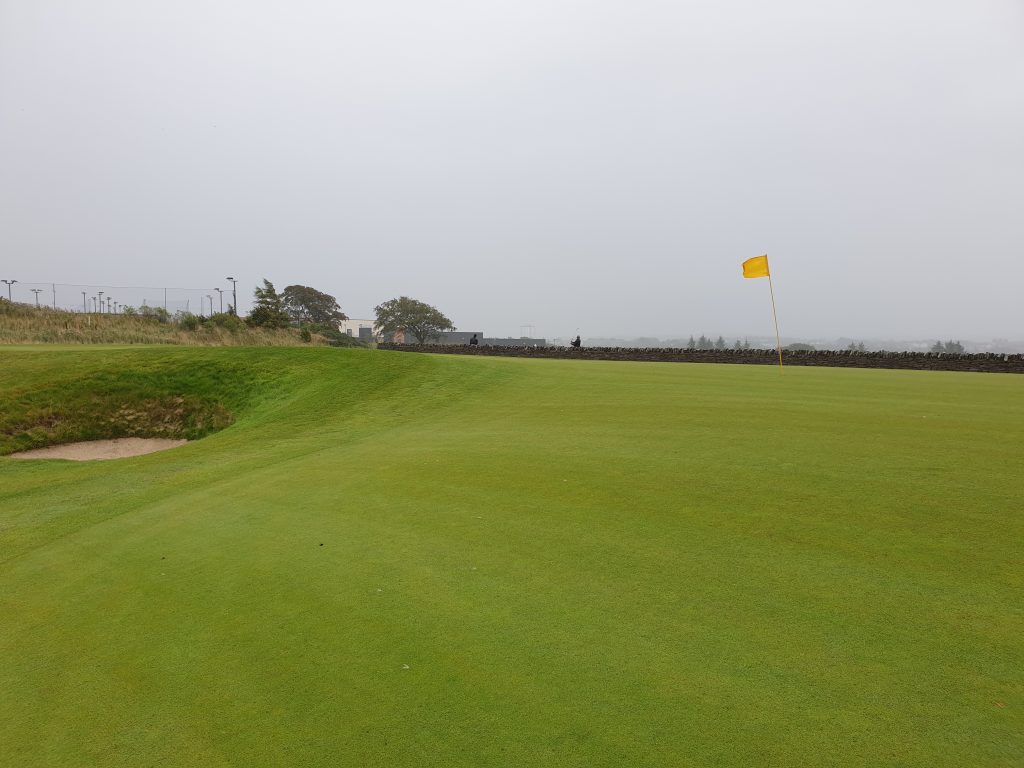
Playing as a singleton, a 4-ball kindly let me tee off first, then watched me rack up a 9 and the par 4 first, playing into the teeth of the wind. I got much better after that, when they weren’t watching. Don’t you sometimes hate getting asked to ‘play through’.
Facts:
Course Type: Parkland/Faux Links?
Par 32 (1 par 5s, 3 par 4s, 5 par 3s)
Distance (yellow): 2307 yards
Moly’s Gross score: 44
